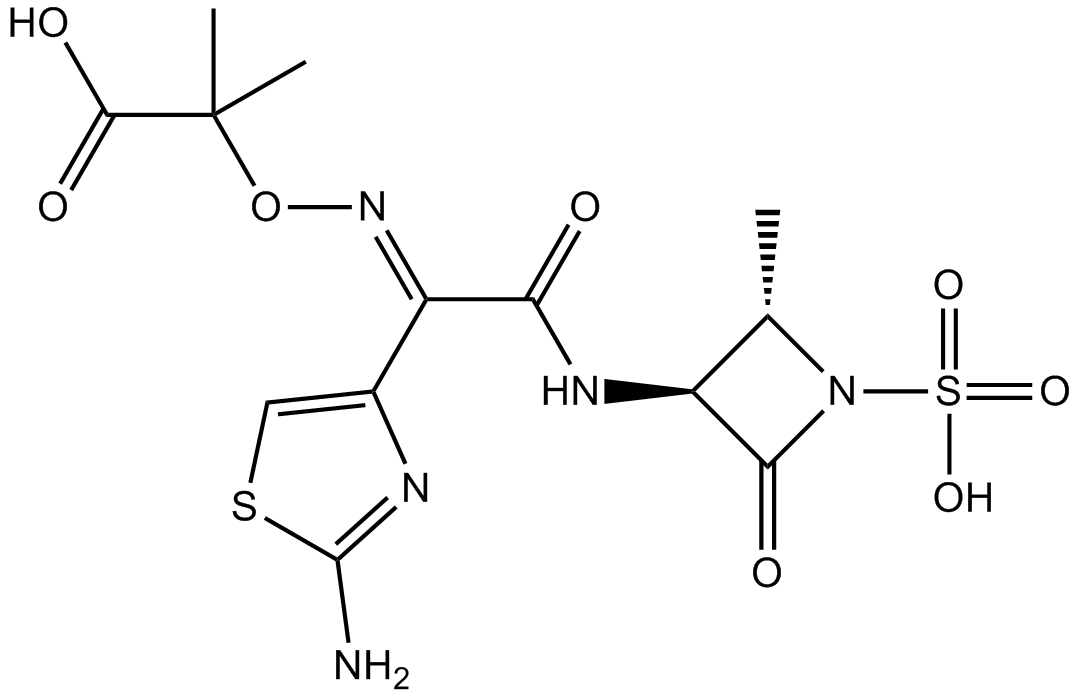Aztreonam (Synonyms: SQ 26,776) |
| Catalog No.GC14670 |
Monobactam antibiotic,selectively active against Gram-negative aerobic bacteria
Products are for research use only. Not for human use. We do not sell to patients.

Cas No.: 78110-38-0
Sample solution is provided at 25 µL, 10mM.
Aztreonam (SQ-26) is a synthetic monocyclic beta-lactam antibiotic, which has a very high affinity for penicillin-binding protein 3 (PBP-3).
Aztreonam (SQ-26) is a synthetic monocyclic beta-lactam antibiotic (a monobactam), with the nucleus based on a simpler monobactam isolated from Chromobacterium violaceum. It was approved by the U.S. Food and Drug Administration in 1986. It is resistant to some beta-lactamases, but is inactivated by extended-spectrum beta-lactamases. Aztreonam has no useful activity against gram-positive or anaerobic microorganisms[1]. Aztreonam (SQ-26) is similar in action to penicillin. It inhibits mucopeptide synthesis in the bacterial cell wall, thereby blocking peptidogly can crosslinking. It has a very high affinity for penicillin-binding protein 3 (PBP-3) and mild affinity for PBP-1a. Aztreonam (SQ-26) binds the penicillin-binding proteins of gram-positive and anaerobic bacteria very poorly and is largely ineffective against them. Aztreonam (SQ-26) is bactericidal but less so than some of the cephalosporins[2].
References:
[1]. Kobayashi Y, et al. Synergy with aztreonam and arbekacin or tobramycin against Pseudomonas aeruginosa isolated from blood. J Antimicrob Chemother. 1992 Dec;30(6):871-2.
[2]. Guay DR, et al. Aztreonam, a new monobactam antimicrobial. Clin Pharm. 1985 Sep-Oct;4(5):516-26.
Average Rating: 5 (Based on Reviews and 15 reference(s) in Google Scholar.)
GLPBIO products are for RESEARCH USE ONLY. Please make sure your review or question is research based.
Required fields are marked with *




















